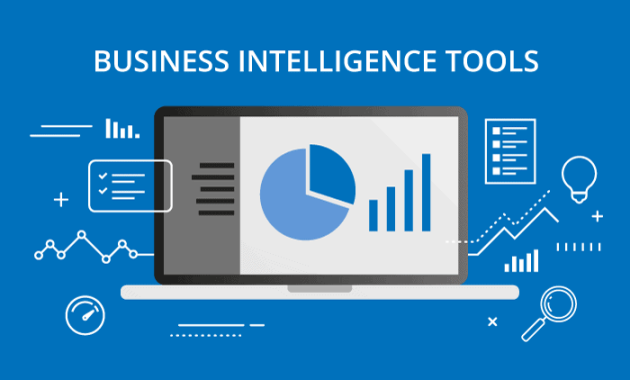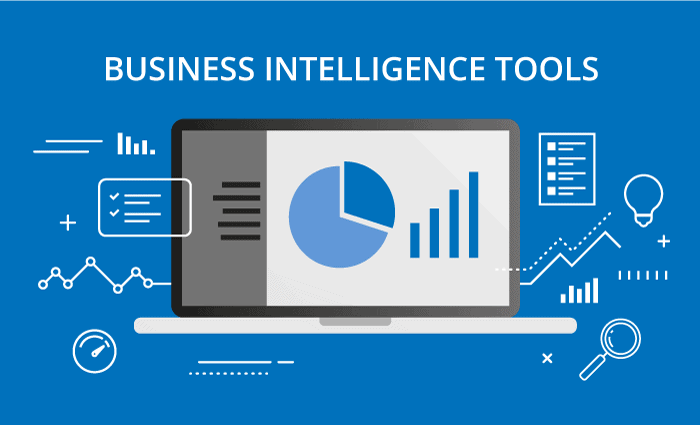
Unlocking Game Success: The Power of Business Intelligence Tools for Play Analytics
In the fast-paced world of gaming, success hinges on understanding player behavior. This understanding allows developers to make informed decisions. It also allows them to optimize games for engagement and revenue. This is where Business Intelligence (BI) tools for play analytics come into play. These tools provide the insights needed to thrive in a competitive market. They transform raw data into actionable strategies. This article explores how these tools empower game developers. We will delve into their functionalities, benefits, and how they drive data-driven decision-making.
The Rise of Data-Driven Gaming
The gaming industry has undergone a significant transformation. It has shifted from intuition-based development to data-driven strategies. The sheer volume of player data generated daily is staggering. This includes in-game actions, purchases, and social interactions. Analyzing this data manually is nearly impossible. Thus, BI tools are essential for extracting meaningful insights. They help identify trends, understand player preferences, and predict future behavior. This shift has revolutionized game development. It allows for more targeted marketing and improved player experiences.
Understanding Play Analytics and Its Importance
Play analytics is the practice of collecting and analyzing data. The data is related to player behavior within a game. This includes metrics like player retention, session length, and in-app purchases. These insights are crucial for game developers. They help them understand what works and what doesn’t. This allows them to make data-driven decisions. They can then optimize game features, content, and marketing strategies. Effective play analytics can significantly improve a game’s performance. This ultimately leads to increased player engagement and revenue.
Key Features of Business Intelligence Tools for Play Analytics
BI tools for play analytics offer a range of powerful features. These features are designed to streamline data analysis and reporting. Here are some of the most important ones:
- Data Collection and Integration: These tools collect data from various sources. This includes game servers, databases, and third-party analytics platforms. They then integrate this data into a centralized repository.
- Data Visualization: Data visualization tools are crucial for interpreting complex data. They transform raw data into easy-to-understand charts and graphs. This allows users to quickly identify trends and patterns.
- Customizable Dashboards: Users can create customized dashboards. These dashboards display the most relevant metrics for their specific needs. This allows for real-time monitoring of key performance indicators (KPIs).
- Segmentation and Cohort Analysis: These features allow for the segmentation of players. This is based on their behavior and demographics. Cohort analysis tracks the behavior of specific groups of players over time.
- Predictive Analytics: Some BI tools offer predictive analytics capabilities. These tools use machine learning to forecast future trends. They also predict player churn and revenue.
- Reporting and Alerting: BI tools generate automated reports. They also send alerts when key metrics deviate from their expected ranges. This allows for timely intervention.
Benefits of Using Business Intelligence Tools for Play Analytics
Implementing BI tools for play analytics offers several advantages for game developers:
- Improved Player Retention: By understanding player behavior, developers can improve player retention. They can identify and address issues that lead to churn.
- Enhanced Player Engagement: BI tools help optimize game features and content. This ensures players remain engaged. This also leads to a more enjoyable gaming experience.
- Increased Revenue: Data-driven insights can inform monetization strategies. This leads to increased revenue and profitability.
- Faster Time to Market: BI tools help developers make informed decisions quickly. They also help them iterate on game features faster. This reduces the time to market.
- Data-Driven Decision Making: BI tools provide a solid foundation for data-driven decision-making. This reduces reliance on intuition and guesswork.
Choosing the Right Business Intelligence Tools
Selecting the right BI tool is crucial for success. Several factors should be considered when making a choice:
- Scalability: The tool should be able to handle large volumes of data. This will ensure it can accommodate future growth.
- Ease of Use: The tool should be user-friendly. This ensures that all team members can use it effectively.
- Integration Capabilities: The tool should integrate with existing game development platforms. It should also integrate with other relevant data sources.
- Reporting and Visualization Features: The tool should offer robust reporting and visualization capabilities. This will ensure effective data analysis.
- Cost: Consider the pricing model and total cost of ownership. Make sure it aligns with your budget.
- Support and Training: Ensure the vendor provides adequate support and training. This will maximize the tool’s effectiveness.
Top Business Intelligence Tools for Play Analytics
Several BI tools are popular in the gaming industry. These tools offer robust features and capabilities. Here are some of the leading solutions:
- Tableau: A powerful data visualization and analytics platform. It offers a wide range of features.
- Power BI: Microsoft’s BI platform. It is known for its ease of use and integration with other Microsoft products.
- Looker: A modern BI platform with strong data modeling capabilities. It is ideal for complex data analysis.
- Amplitude: A product analytics platform. It focuses on user behavior analysis.
- Mixpanel: Another popular product analytics platform. It provides insights into user engagement and retention.
These tools offer a variety of features. They also provide the insights needed to drive success in the gaming industry. Each platform has strengths and weaknesses. The best choice depends on your specific needs and requirements.
Implementing Business Intelligence Tools for Play Analytics
Implementing BI tools requires a strategic approach. Here’s a step-by-step guide:
- Define Goals and Objectives: Clearly define what you want to achieve. This will guide your data analysis efforts.
- Choose the Right Tool: Select a BI tool. The tool should align with your needs and requirements.
- Collect and Integrate Data: Gather data from all relevant sources. Then, integrate it into the chosen BI tool.
- Build Dashboards and Reports: Create customized dashboards. These dashboards will help you monitor key metrics.
- Analyze Data and Identify Insights: Analyze the data. Look for patterns and trends.
- Take Action and Iterate: Use the insights to make informed decisions. Make sure to iterate on game features and strategies.
- Train Your Team: Provide training to your team. This will ensure they can use the tool effectively.
Real-World Examples: The Impact of Play Analytics
Many game developers have successfully leveraged BI tools. They have used them to improve their game performance. Here are a few examples:
- Example 1: A mobile game developer used play analytics. They identified a drop-off in player engagement at level 10. They then redesigned the level. The redesigned level made it more engaging. This resulted in a 20% increase in player retention.
- Example 2: An online multiplayer game analyzed player spending habits. They identified a specific item that players frequently purchased. They then created a bundle. The bundle offered the item at a discount. This boosted revenue by 15%.
- Example 3: A casual game developer used play analytics. They identified that players were abandoning the game. They abandoned the game after a particular tutorial. They then simplified the tutorial. This increased player retention by 10%.
These examples demonstrate the power of business intelligence tools for play analytics. They highlight the value of data-driven decision-making.
Future Trends in Play Analytics
The field of play analytics is continuously evolving. Several trends are shaping the future of this industry:
- Artificial Intelligence (AI) and Machine Learning (ML): AI and ML are playing an increasingly important role. They automate data analysis. They also provide predictive insights.
- Real-Time Analytics: The demand for real-time data analysis is growing. This allows for immediate responses to player behavior.
- Personalization: Games are becoming more personalized. This is based on individual player preferences.
- Cross-Platform Analytics: Developers need to analyze data. They need to analyze data across multiple platforms. This ensures a consistent player experience.
These trends will continue to shape the future of play analytics. They will drive innovation in the gaming industry.
Conclusion: Embracing Data for Gaming Success
Business intelligence tools for play analytics are essential for modern game development. They empower developers to understand player behavior. They also help them make data-driven decisions. By leveraging these tools, game developers can improve player retention. They can also boost engagement and increase revenue. Embracing data is no longer optional. It is a necessity for thriving in the competitive gaming market. As the industry evolves, the importance of play analytics will only continue to grow. Game developers must invest in these tools. They must also integrate data-driven strategies into their workflows.
By understanding player data and leveraging the power of BI tools, developers can unlock the full potential of their games. They can also create truly engaging and successful gaming experiences. The future of gaming is data-driven. Those who embrace this reality will be best positioned for success. The implementation of business intelligence tools for play analytics is a crucial step.
[See also: Related Article Titles]

